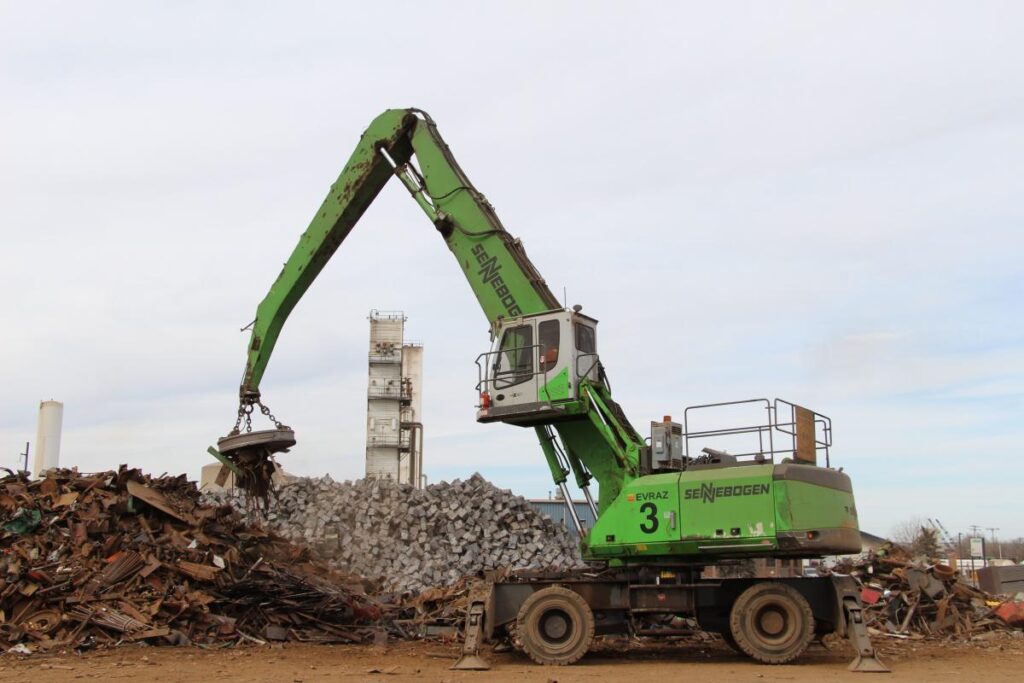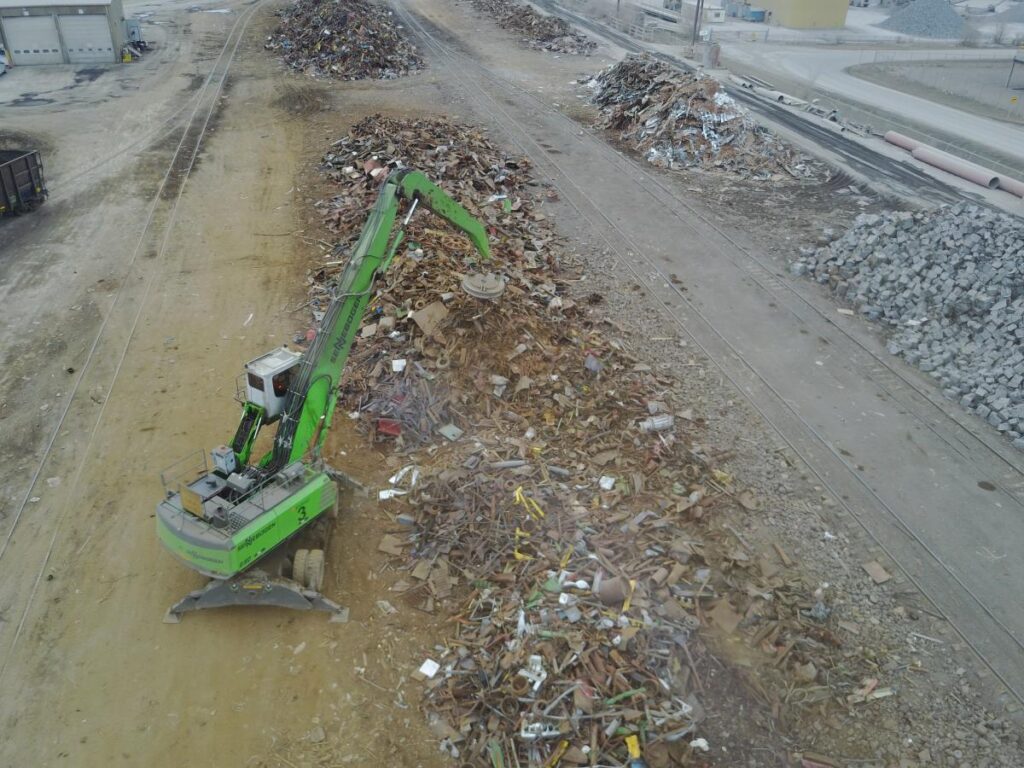
With 21,000 hours of service and counting, the original SENNEBOGEN 850 M material handlers on site remain integral to current and future operations at EVRAZ North America’s Regina Steel Division Yard.
Regina, SK – In just six years, SENNEBOGEN material handlers have carved out their place at EVRAZ North America’s giant Regina Steel Division Yard. So much so that they are not only integral to current operations, but as future solutions in potential yard configurations that would add more of the machines in different tasks, says Kris Vancha, Site Maintenance Superintendent.
EVRAZ North America currently has several SENNEBOGEN 850 M machines working at the giant Regina steel mill, which employs about 1,200 people in total. The first 850 Ms were purchased new in late 2010 and were put into active duty in early 2011. Each of those units has about 21,000 hours of service so far. One of the company’s original SENNEBOGEN units is equipped with a grapple, while the other units have magnets.
“It is all scrap transfer. If it’s an offloading situation, these machines will be emptying out outgoing railroad cars and putting the scrap into the inventory piles,” says Vancha’s associate, Kevin Hicks, Area Manager of Yard Operations, “and when it is time to fill the railcars going to the melt shop, it’ll be coming from the piles and loaded by these same machines into our internal fleet of railcars.”
With its four rotating crews, EVRAZ North America’s Regina yard operates 24/7. However different days of the week pose different demands for each of the rubber-tired SENNEBOGEN material handlers, explains Hicks. During the day shift Monday through Friday, when tractor-trailers are constantly moving in and out of the yard, the material handlers work safely in close proximity to one another. When an opportunity presents itself at other times of the day or night, they can then be quickly moved and spread throughout the yard to maximize production.

Operators at EVRAZ North America’s Regina Steel Division Yard give a big thumbs-up to the SENNEBOGEN 850 M material handlers for their productivity and creature comforts, says Kevin Hicks, Area Manager of Yard Operations.
Not your father’s material handler
Having spent time in the past as an in-yard operator himself, Hicks understands full well when his SENNEBOGEN operators tell him of the comfort, ease of operation and productivity they are enjoying today.
“We used to run rail-track mobile cranes, and we would have to load one railcar at a time and then put it away and go grab another empty railcar,” he recalls. “With the SENNEBOGENs, now we can set up 10, 15, 20, 25 railcars – as many as we need – and load them all without having to move them. Being able to set a string of empty railcars up at three, four or five different piles of scrap and then be able to access all of those cars in succession is huge for us, not only in terms of time, but it’s way better for overall production.”
The elevated-cab design is a key factor in the material handlers keeping up with the Regina yard’s busy demands, as well as operator safety, says Hicks. “Back in the old days with the cable cranes, when you were offloading a railcar, you would have to get out of your crane, walk over and climb up on the car to make sure that the car was empty,” he recalls. “Now with the SENNEBOGENs, being able to position yourself at the middle of a car, elevate the cab and see what’s left inside the car is huge.”
Effective fleet management
With the Regina facility’s rebuilt SENNEBOGEN 850 M now operating, it is time to begin cycling the original three units through a refurbishment program, says Vancha. Having received numerous pallets of parts shipped from SENNEBOGEN, he was just about to take “#1” offline for a month and send it offsite for a major overhaul, including a new engine and hydraulics.
For regular machine maintenance, “With four yard mechanics, we do as much as we can in-house,” says Vancha who, like Hicks, has been working at the Regina yard for about 20 years. In the future, Vancha anticipates reaching out to authorized SENNEBOGEN dealer Redhead Equipment for major machine support, as well as other sales and service opportunities.
